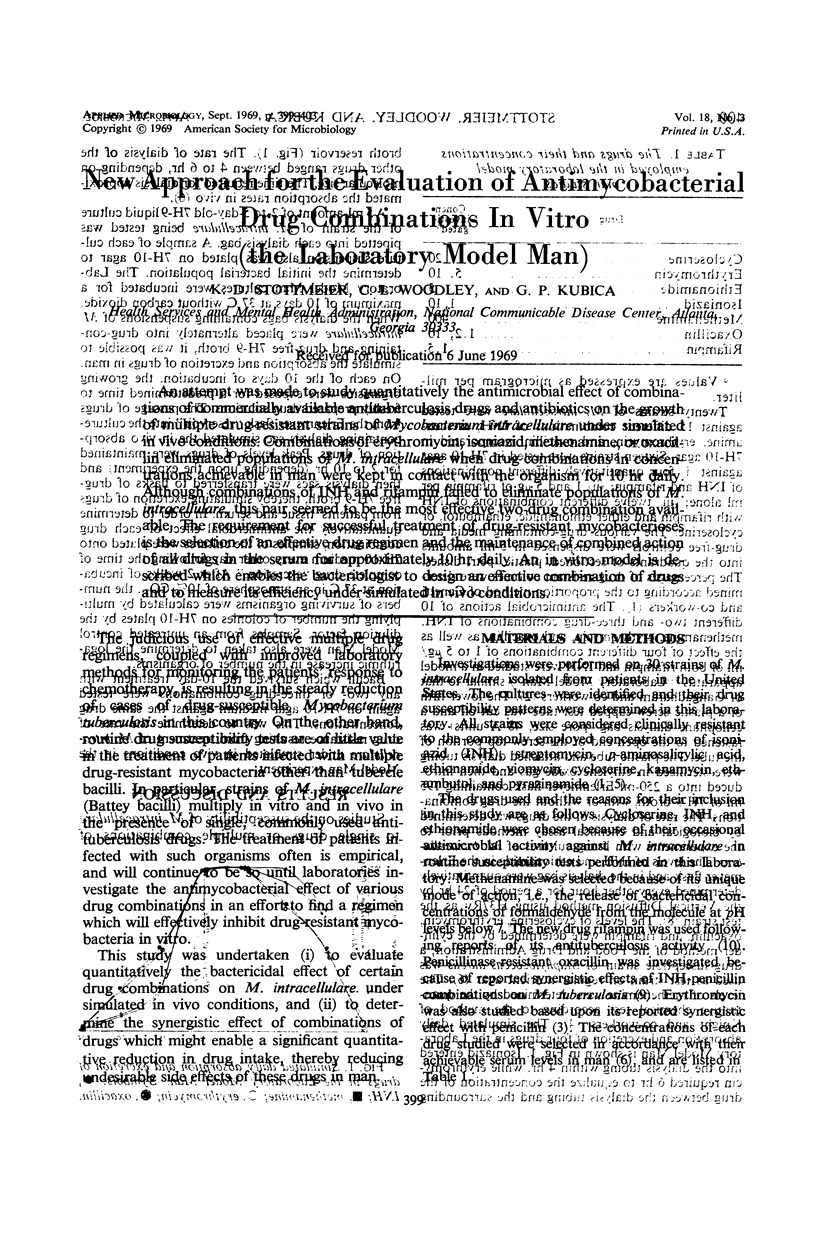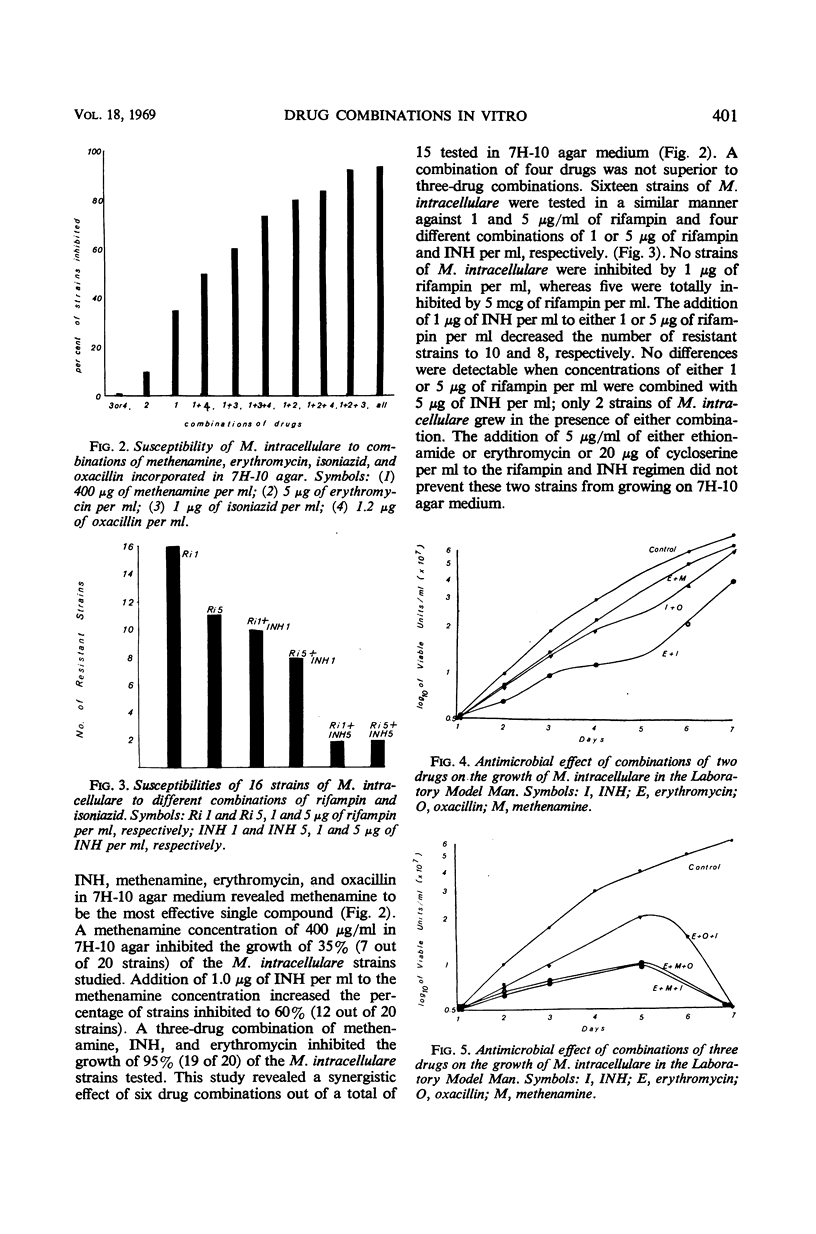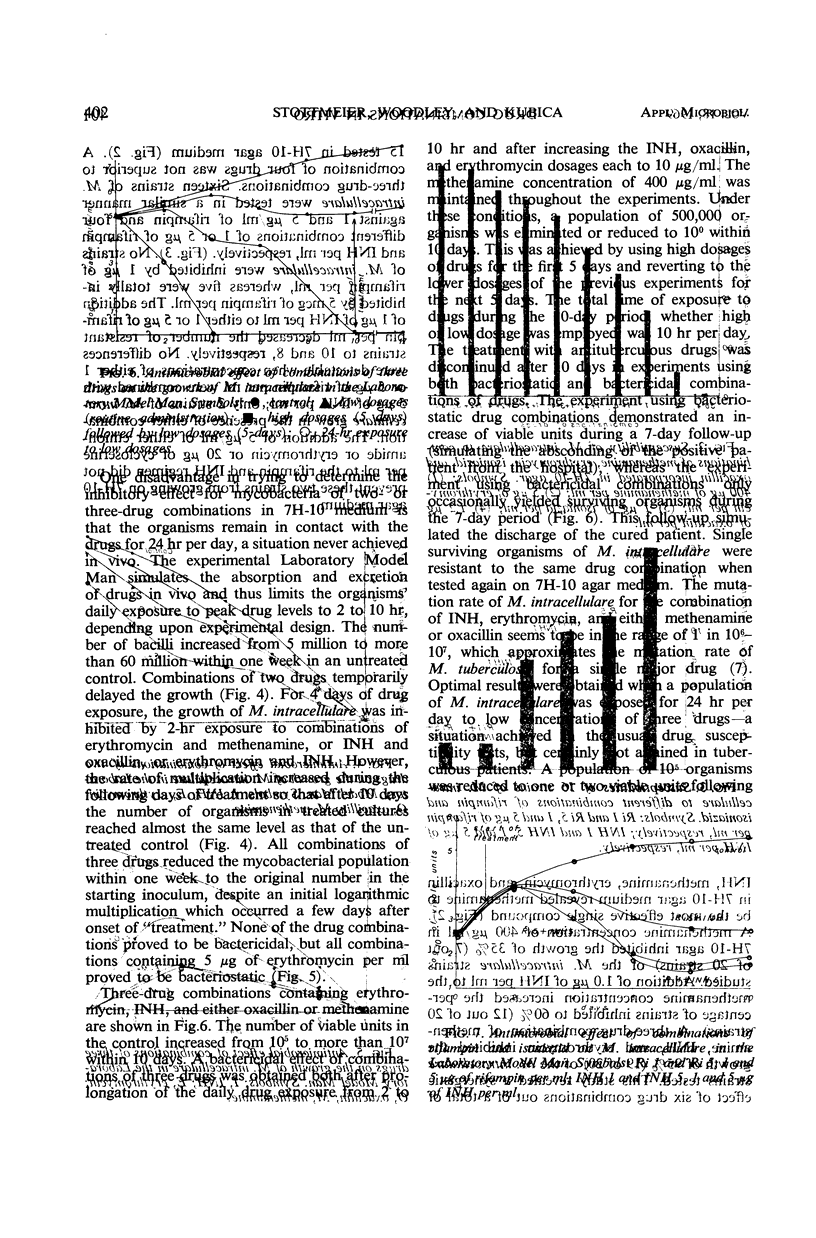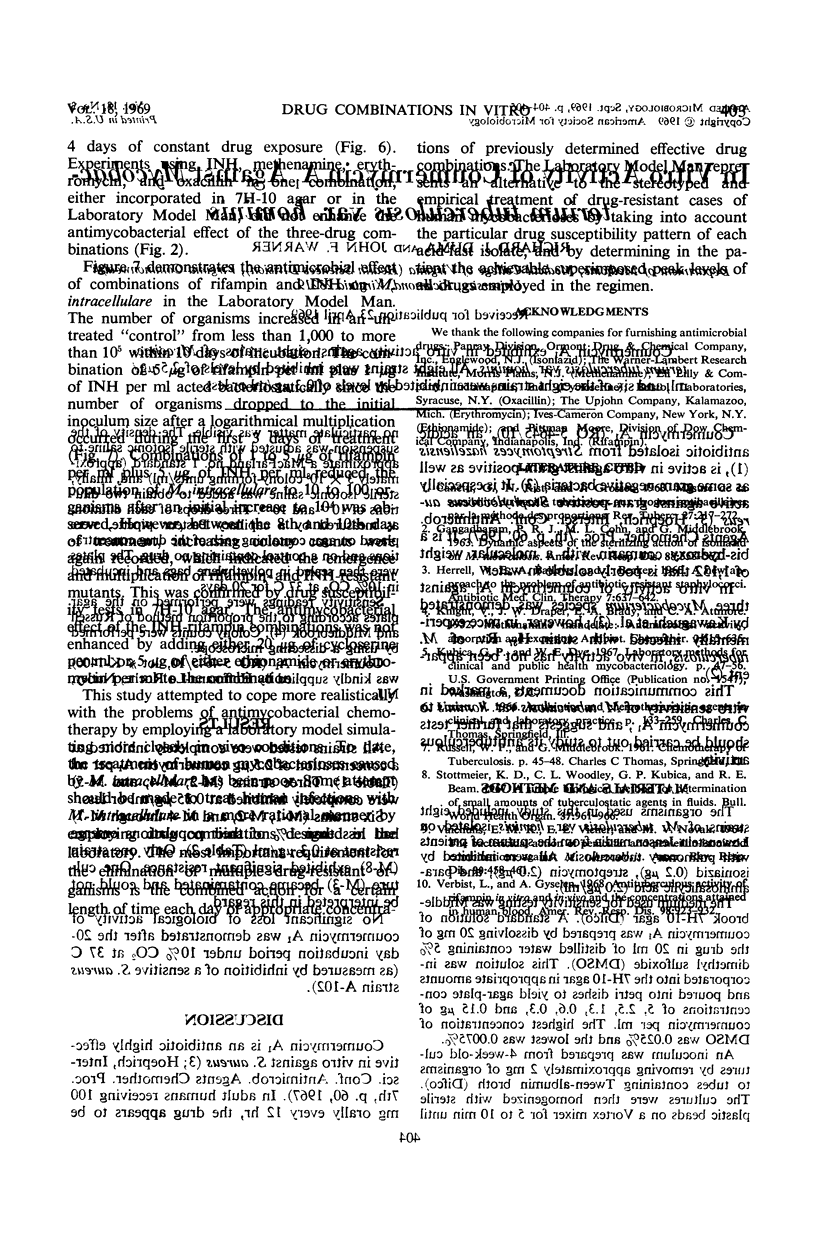Abstract
An attempt was made to study quantitatively the antimicrobial effect of combinations of commercially available antituberculosis drugs and antibiotics on the growth of multiple drug resistant strains of Mycobacteriunt intracellulare under simulated in vivo conditions. Combinations of erythromycin, isomiazid, methenamine, or exacillin eliminated populations of M. intracellulare when drug combinations in concentrations achievable in man were kept in contact with the organism for 10 hr daily. Although combinations of INH and rifampin failed to eliminate populations of M. intracellulare this pair seemed to be the most effective two-drug combination available. The requirement for successful treatment of drug-resistant mycobacterioses is the selection of an effective drug regimen and the maintenance of combined action of all drugs in the serum for approximately 10 hr daily. An in vitro model is described which enables the bacteriologist to design an effective combination of drugs and to measure its efficiency under simulated in vivo conditions.
Full text
PDF






